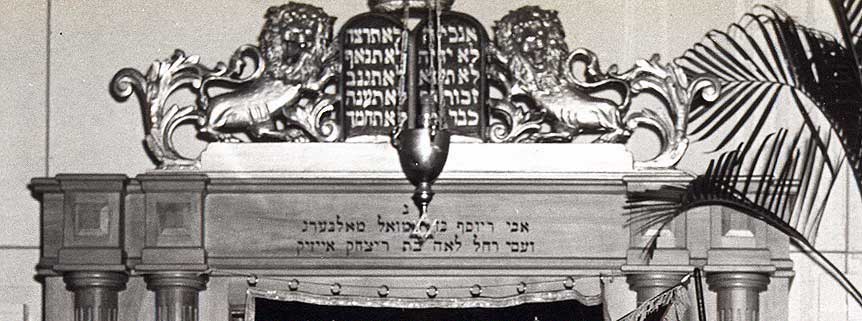Many think of Miami as the center of Jewish life and culture in Florida, but Miami was a mosquito-infested swamp when the first Jewish immigrants arrived in Key West and established a thriving community. While the exact date and identity of the first Jewish settlers in Key West is unknown, Jews were here when the City was incorporated in 1832.
By the early 1880’s, Joe Wolfson, Abraham Wolkowsky and Mendell Rippa had organized the Jewish community. Many Jews came here for economic opportunity or were shipwrecked, and then decided to stay. All found escape from the anti-Semitism that was rampant in Europe and Russia at that time. Together, they founded Congregation B’nai Zion in 1887. In the 1890’s, so many Jewish pushcart peddlers were successfully competing with established merchants that the City passed an ordinance levying a $1,000 license fee (the equivalent of $27,000 now) on each pushcart. This prompted the Jewish peddlers to open their own stores and caused them to become important and permanent pillars of the local economy. Also about that time, the Jewish population supported the Cuban Revolution of Jose Marti. Marti gave famous speeches from the porch of the home of one of our congregants, Louis Fine. This porch became known as La Terraza de Marti (now La Te Da Restaurant).
Congregation B’nai Zion’s services were held in members’ homes until 1907 when the Congregation bought the office of Dr. John Maloney at the corner of Simonton and Southard Streets.
Through the 1920’s, Key West and its Jewish community thrived. Then, the departure of the cigar and sponging industries hurt the local economy, and by 1935, the population had dropped to 12,000 citizens (from 30,000 in 1920). Only twelve Jewish families remained. To make matters worse, the Depression hit Key West hard. Fifty percent of the adult population was on relief. When World War II broke out, Key West became a major military center bringing in thousands of new and returning families, including Jews. The building now housing B’nai Zion was designed by by Charles “Sonny” McCoy, a “conch” (native born Key Wester) and a past city mayor. Before the arson fire, the sanctuary had seats for 168 worshipers and was attached to a large social hall, a full kitchen and a residence for the Rabbi. The building of congregation B’nai Zion was completed in 1969. The building’s facade contains six columns symbolic of the six million Jews who perished in the Holocaust and replicating the six columns of King Solomon’s Temple in Jerusalem.
The synagogue is chartered as Conservative but we have a liberal slant. Men and women sit together, women participate fully on the Bimah and our members and visitors include those of any sexual orientation, reflecting the diversity, acceptance and openness of Key West. The achievements of our children in our active religious school provide joy to all of us as well as confirmation that the contribution of Key West Jews will remain an important element of life here in Paradise.
